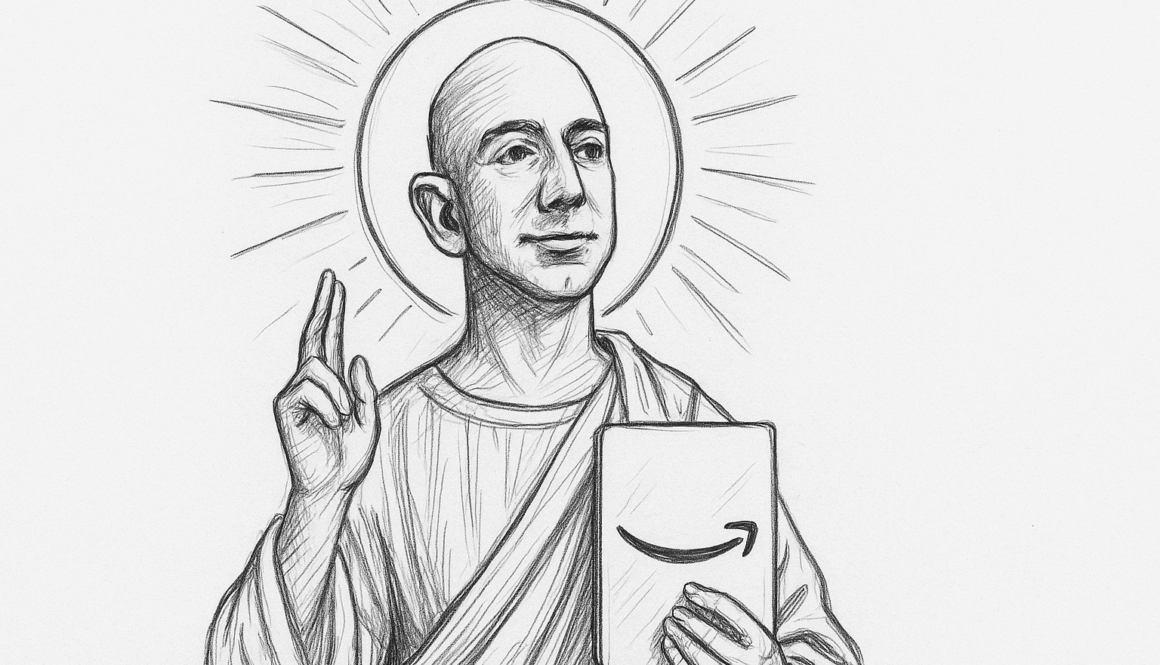Saint Bezos and the Metro Apostles
Hey billboard heretics—
You step into the London Underground, eyes glazed from a long workday, and BAM—there it is. Not a perfume ad. Not an Apple product. But a guerilla poster of Jeff Bezos with a halo, captioned: “Tax Me If You Can.”
Next to it, Elon Musk reimagined as a saint holding a flaming Twitter bird. Below, in bold: “Worship Wealth, Starve the Planet.”
These aren’t pranks. They’re the frontline of a growing global movement of activist artists hacking urban ad spaces to push back against billionaire idolatry and corporate overreach.
This is the holy war of attention.

The Great Billboard Rebellion _____ Art as Counter-Marketing
In the past year, cities like Berlin, London, and New York have become silent battlegrounds where corporate iconography is being hijacked—and reinterpreted.
In London, the activist collective Brandalism covertly replaced over 600 commercial billboards in 2023 with unauthorized posters targeting Shell, Amazon, and Barclays. Gone were the high-budget visuals; in their place, biting satirical slogans like: “Barclays — Proud Sponsor of Climate Chaos.” The campaign spread through the city’s bus stops and Tube stations like wildfire, catching morning commuters mid-scroll.
In Berlin, Subvertisers International turned U-Bahn corridors into ironic galleries. In Kreuzberg, posters portrayed tech moguls in medieval papal robes—Mark Zuckerberg clutching a crucifix of data points, Bezos crowned like a Renaissance saint. Their aim? To ridicule the cult-like aura these figures enjoy.
And in Paris, faux Dior ads appeared overnight in several metro stops. On closer look, they depicted fashion models surrounded by faint silhouettes of exploited garment workers—calling attention to the silent victims behind the luxury facade. No call to action. No logo. Just visual dissonance designed to haunt you.
These aren’t just stunts. They’re carefully constructed design interventions meant to reclaim public space from private interests and rewrite the visual grammar of our cities.

Marketing’s Role in the Idol Economy
Let’s not kid ourselves: marketing didn’t just participate in this spectacle—it built it.
If Jeff Bezos looks like a saint, it’s because an army of art directors, brand strategists, and PR consultants were paid handsomely to make him appear that way.
From the cold-clean minimalism of Tesla’s product shots to the mythic tone of Amazon’s commercials, Big Tech has appropriated the aesthetics of religion. Sacred light. Heroic framing. Origin stories with messianic undertones.
You don’t just buy a Tesla. You convert. You don’t just subscribe to Prime. You enter the church of frictionless living.
Meanwhile, marketing teams craft mythologies: Musk as visionary. Zuckerberg as unifier. Bezos as genius-builder. It’s a sleight of hand that turns flawed, powerful men into cultural archetypes—and distracts from the consequences of their decisions.
And the media? All too often, the willing apostles—preaching instead of probing.

The Psychology of Worship
Humans are built to follow symbols. When institutions lose credibility—governments, schools, churches—we turn to charismatic figures with clear narratives.
Enter: the billionaire.
They have money (we confuse it with merit), exposure (we mistake it for truth), and a brand (we read it as identity). Put them on a TED stage or Time magazine, and the line between thought leader and prophet becomes dangerously thin.
This isn’t just cringe. It’s corrosive.
Because it pulls our attention away from policies, from systemic inequality, from the fact that no one makes billions without stepping over millions.
The real danger isn’t Musk tweeting. It’s the narrative that he’s supposed to tweet—because he’s some misunderstood genius reshaping the world.
Counter-campaigns like those of Brandalism aren’t just acts of rebellion. They’re acts of storytelling. They reclaim narrative space.

So What Can We Do?
- Question the visual. Next time you see a billionaire on a billboard, ask: Who funded this image? What’s it selling—really?
- Support subversion. Share activist art. Talk about it. Visibility is resistance.
- Rethink your role. If you work in marketing, ask yourself: Am I building stories or building myths? There’s a difference.
- Design for disruption. A poster, a font, a color shift can short-circuit the scroll. Use that power.
YES:::::::
The streets are speaking. Not with perfume ads—but with visual resistance.
In London, in Berlin, in Paris—the apostles of disruption are out in force. And they’re not selling products. They’re selling clarity.
Brandalism. Subvertisers International. The Special Patrol Group. These are not brands. They’re counter-brands. Their canvas? The very walls we ignore every day.
In the end, marketing isn’t just about what we see. It’s about what we choose to believe.
And sometimes, the most honest message is the one that no one paid to print.
Until next time, stay defiant. \
Alex
👉 Are you building a brand—or just another corporate religion?
Let’s talk. Kredo Marketing helps you cut through the noise, not add to it.
